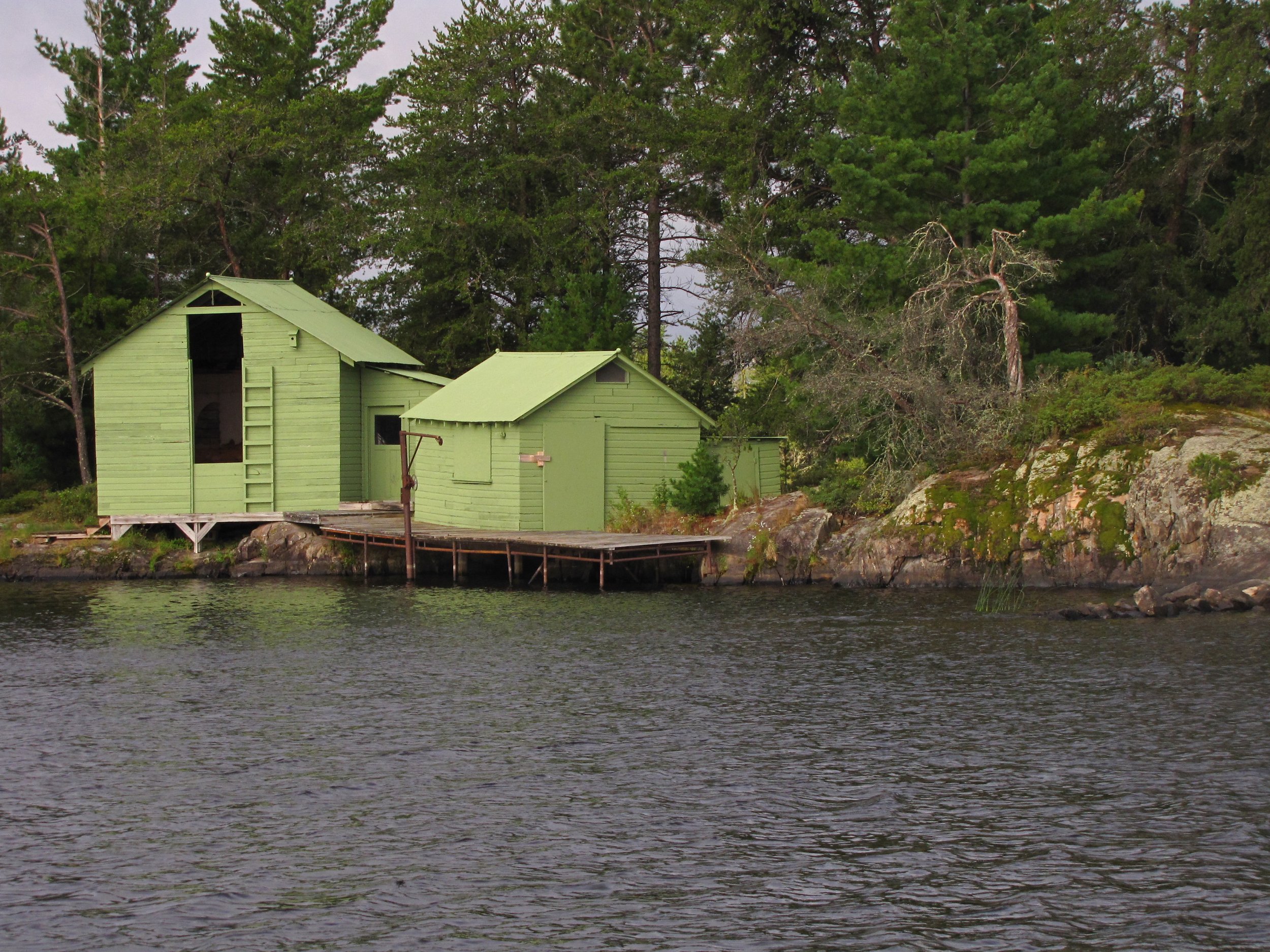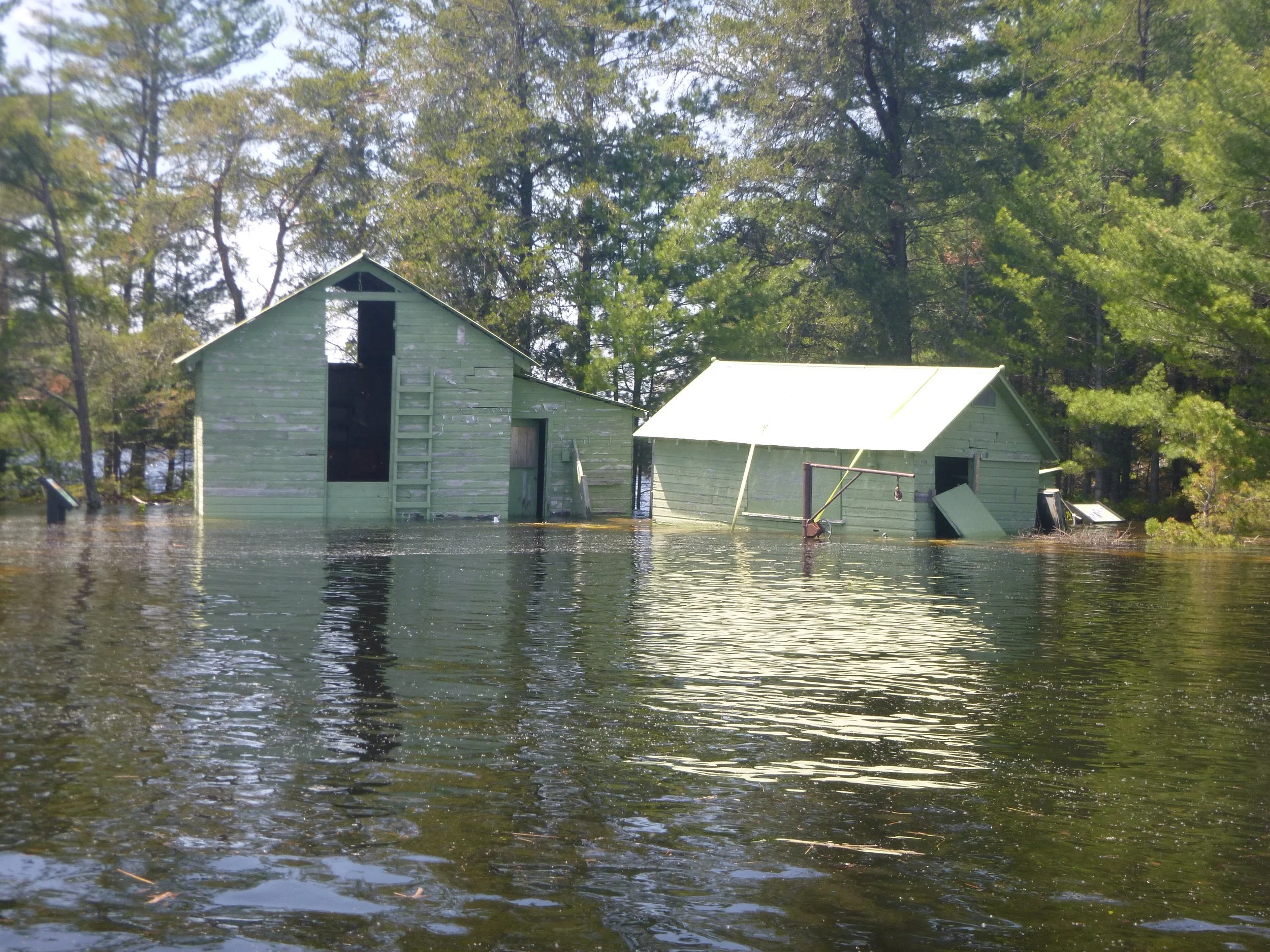The Story of Us: Protecting Voyageurs’ Archaeological Sites After Summer Flooding
Voyageurs National Park experienced unprecedented flooding this summer that caused major impacts to docks, backcountry trails, campsites, homes, and area businesses. Heavy snowpack, late ground thaw, and several high rain events caused devastating flooding in and around Voyageurs National Park. Rainy Lake and the Namakan Lake Basin experienced water levels 22 inches higher than the 2014 flood and broke the previous record set in 1950.
An eroded bank impacted by flooding, NPS
More than a place for recreation, the park preserves a vital story of our human history. Voyageurs holds more than 450 known archaeological sites, with some artifacts dating back as much as 10,500 years. Preserving these sites is critical to honor the cultural heritage of the region, home to the Ojibwe and other Native Peoples whose ancestors lived on and near these waters.
“It was clear that from the start of the flood that archaeology sites and historic buildings were being impacted,” says Brian Harmon, Head of Natural and Cultural Resources at Voyageurs National Park with the National Park Service. The waves from the flooding threatened to erode banks where sensitive archaeological sites exist putting them at risk of damage or even washed away.
Harry Oveson Fish Camp before flooding impacted the historic site, NPS
The first stage in the park’s response plan involved creating a list of high priority archaeological sites to monitor. Examples included sites with cut banks that are vulnerable to erosion, pictographs, and areas with notably intact archaeology. From there, the cultural resources team boated out to record impacts on approximately 37 archaeological sites. Historical buildings also received a rapid response, including the Harry Oveson Fish Camp which had sandbags strapped along its exterior to prevent the structure from floating away. Unfortunately, the building still lost one of its iconic green doors.
It is estimated that two-thirds of the park’s archaeological sites were covered by water during the flood. Positively, there weren’t instances of severe damage that required immediate action. However, many sites experienced erosion resulting in exposed artifacts. Staff will return to these sites to record artifact data and to continue monitoring these vulnerable areas. For the park’s historical buildings, damage reports are still being compiled and rehabilitation efforts have begun. These ongoing efforts are critical to preserve the rich history that shaped the park we enjoy today.
Harry Oveson Fish Camp during summer flooding, the door on the right side of the image was lost / NPS
“All archaeology is a record of what humans have done. It is our history as a species. Everything that we have accomplished. I think that’s a very worthwhile story to preserve,” says Harmon.
Unraveling our human history anywhere is a major feat, but in Voyageurs National Park this work is particularly challenging. The park’s wet climate quickens decomposition rates and increases foliage growth. Additionally, relative dating is often used by archaeologists to assess the age of an artifact (e.g. objects found deeper in the soil are older than objects found closer to the soil surface.) However, Voyageurs contains a shallow depth of soil above its bedrock, making it difficult to estimate the age of artifacts without radiocarbon dating.
For Brian Harmon, he hopes people walk away with a deeper respect and curiosity for archaeology:
“If you care about the story of us, you care about archaeology. And the archaeology of the Border Lakes is little known, compared to many other regions of the United States. There is still a tremendous amount here for us to learn.”
Help Protect Archaeological Sites
Voyageurs Conservancy members value the cultural heritage of the region. The Conservancy provides funding for archaeological monitoring efforts, flood response, and historical building rehabilitation. If you’d like to support park projects like this, please consider a gift and join our dedicated supporters who ensure the park is accessible to all, ecologically sound, and remains a site of archaeological significance.



